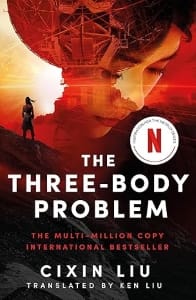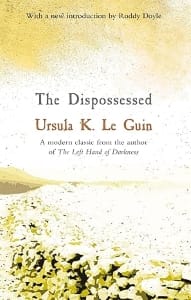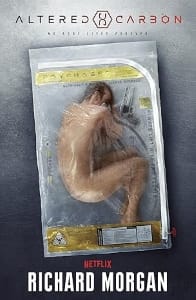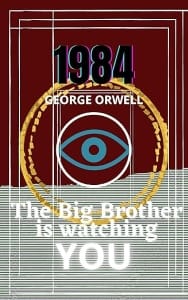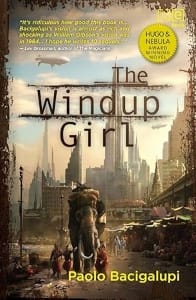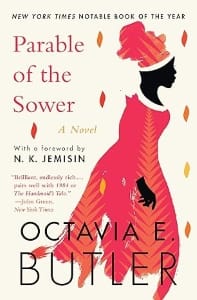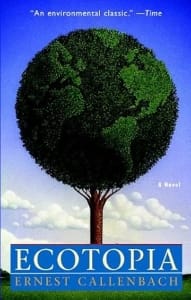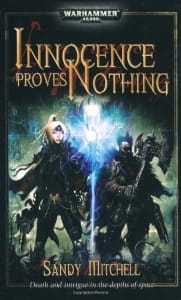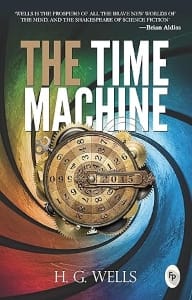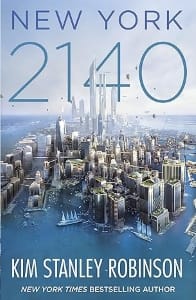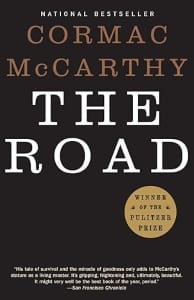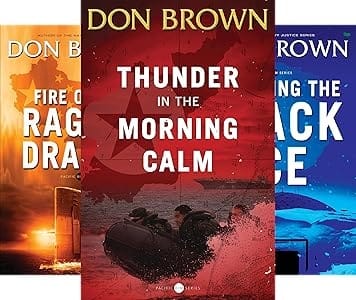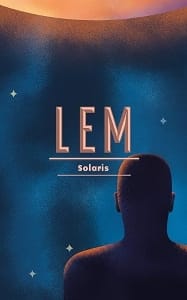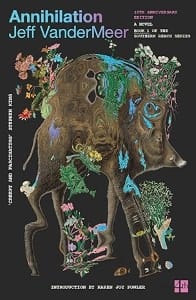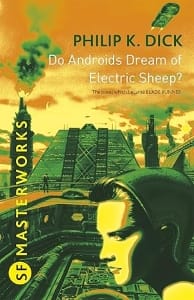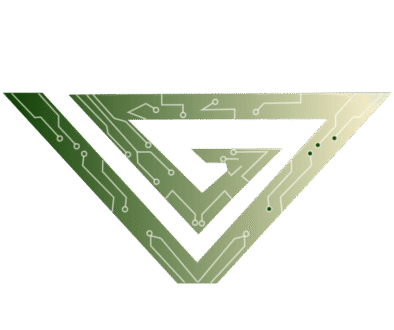Chapter 2: Genres & Subgenres – Part 2 (Science Fiction)
Science Fiction — Tomorrow’s Autopsy of Today
Science fiction isn’t about robots. Not really. It’s about us. It’s anthropology written in speculative ink, sociology projected into stellar futures, psychology filtered through neural chips and alien tongues. When Octavia E. Butler wrote of genetic domination and power structures across galaxies, she was writing about American race dynamics. When Liu Cixin engineered a three-body puzzle with cosmic stakes, he was interrogating Cold War ideologies and existential dread. The best science fiction doesn’t predict the future—it dissects the present by simulating alternate outcomes.
The genre has exploded in recent years, driven by an age where our daily news often reads like cyberpunk satire. Climate fiction, or “cli-fi,” has surged in popularity, wrapping ecological crisis in stories of survival, exodus, and rewilding. Post-apocalyptic narratives reimagine civilization through viruses, tech collapses, or AI singularities, making them almost uncomfortably prophetic. Meanwhile, solarpunk and hopepunk offer counterprogramming—visions of what could go right if humanity chooses wisely. But beneath all the jargon and theoretical tech, science fiction is still a deeply emotional genre. It’s about loss—of Earth, of innocence, of bodies. It’s about longing—for connection, for understanding, for meaning in a vast and indifferent universe.
Writing science fiction demands research, yes, but more importantly, it requires vision. Every choice of technology should ripple outward, transforming culture, ethics, even language. A single invention could change courtship, religion, warfare, and childhood. That’s your playground. But never forget: no matter how far you go—across time, space, or reality—the human heart still beats in your protagonist. That’s the gravity that keeps readers grounded, no matter how alien your sky.
Hard Science Fiction: Precision Dreams and Existential Calculations
Hard Science Fiction is where physics becomes prophecy, where engineering sketches dream of gods, and where the speculative is shackled lovingly to the laws of the universe. It’s the subgenre where nothing floats unless thrust and gravity are accounted for, where the speed of light is a wall rather than a handwave, and where readers must often wrestle with equations as much as with characters. But it’s not dry — not if done right. When the emotion clicks, Hard Sci-Fi becomes a symphony of awe, fear, and wonder built on real scientific inquiry. It’s not about skipping the science — it’s about finding the heart within it.
At its best, Hard Sci-Fi isn’t just a showcase of knowledge; it’s a deep philosophical meditation on our place in the cosmos. Think Arthur C. Clarke’s Rendezvous with Rama, where alien contact comes not with words but through cold geometry, or Kim Stanley Robinson’s Mars Trilogy, where terraforming isn’t just about making a red planet green — it’s about politics, ethics, and who gets to define progress. In Liu Cixin’s The Three-Body Problem, physics, game theory, and astrophysics all crash into human paranoia and cultural trauma, crafting a chilling portrait of first contact shaped by historical scars.
For writers, Hard Science Fiction is both a challenge and a dare. It demands research, rigor, and respect for real science. But that effort births a uniquely powerful experience. Every orbital path, genetic anomaly, or time dilation has emotional weight. Build your story on truth, and you earn the right to question everything. Ask the big questions: Can humanity survive itself? Is intelligence enough to save us? Are we ready for the consequences of our own genius?
Soft Science Fiction: Emotional Logic and Speculative Humanity
Soft Science Fiction isn’t lesser — it’s deeper in a different way. It forgoes the decimal places of orbital mechanics in favor of the tangled psychology of future humans. Where Hard Sci-Fi zooms in on the machine, Soft Sci-Fi explores the soul that built it — or the one it’s replacing. It revolves around sociology, philosophy, politics, and emotion, giving us extrapolated visions of our future through the lens of human behavior, not just astrophysical realism.
Look at Ursula K. Le Guin’s The Dispossessed, where anarchism, culture, and personal longing orbit one another with more gravitational pull than any black hole. Or Octavia Butler’s Parable of the Sower, where climate change, systemic collapse, and spiritual evolution become the backdrop for a young Black woman’s journey toward a new kind of faith. Soft Sci-Fi explores the boundaries of identity, belief, gender, and society in speculative spaces. It’s about what we become when technology evolves — not just biologically, but culturally.
For writers, Soft Sci-Fi is your philosophical playground. You’re not limited by what’s possible in a lab; you’re free to ask: What if empathy was weaponized? What if memory could be extracted and sold? What if nations were replaced by emotional alliances? Your characters are your science, and their choices ripple out like new laws of thermodynamics.
Cyberpunk: Neon Noir, Dystopian Decay, and the Ghost in the Machine
Cyberpunk is the future with a hangover. It’s where corporations are gods, AIs whisper from back-alley routers, and freedom comes with a firmware update — if it comes at all. It’s the grimy, high-tech low-life aesthetic where slick neon cuts through pollution-choked skylines and resistance movements are encoded in malware. Born in the anxieties of the 1980s and infused with the nihilism of capitalism run amok, cyberpunk paints the future not as utopia, but as a mirror to late-stage societal breakdown.
William Gibson’s Neuromancer is the origin myth — a street-savvy hacker caught in a web of AI conspiracies and post-national power structures. But cyberpunk isn’t frozen in the ‘80s. Look at Ghost in the Shell, where questions of identity and consciousness drown in electronic oceans. Or Altered Carbon, where immortality is sold to the highest bidder and your soul is just a disk in someone else’s drawer. Cyberpunk is dystopia wrapped in chrome — but it still pulses with rebellion.
For writers, cyberpunk offers a sandbox of stylish despair and digital resistance. You’ll be asked to navigate topics like surveillance, data colonialism, transhumanism, and body commodification. Your world should feel hacked together — beautiful, broken, alive. Let your prose glitch. Let your characters bleed code. And remember: under all that circuitry, cyberpunk is deeply human — it’s about surviving the systems designed to erase us.
Space Opera: Grand Emotions, Galactic Wars, and Empires Among the Stars
Space Opera is where science fiction puts on a cape and sings. It’s melodrama at light speed — epic wars, doomed romances, ancient alien prophecies, and ships the size of continents. If Hard Sci-Fi is a physics lecture and Cyberpunk a political manifesto, Space Opera is a spacefaring Shakespearean saga. It’s not about strict realism — it’s about scale, stakes, and style.
Think Dune by Frank Herbert, where interstellar empires clash over mysticism, ecology, and prophecy. Or Iain M. Banks’ Culture series, where AI Minds preside over a post-scarcity society both utopian and unsettling. Or Mass Effect, where galactic unity is threatened by ancient machine gods and held together by ragtag crews of weirdos and warriors. Space Opera lets us imagine civilizations thousands of years old, moral quandaries the size of moons, and wars that stretch across time and dimension.
For writers, this subgenre demands ambition. Your world needs history, theology, politics, and fashion. Your characters must bleed with passion — love, rage, betrayal, legacy. The tone should be operatic, mythic, but always grounded in human (or post-human) truths. Use science as scaffolding, but let story lead. And above all, think big. Really big.
Dystopian Sci-Fi: The Broken Mirror of Tomorrow
Dystopian science fiction is the grim oracle at the edge of civilization, whispering warnings wrapped in bleak futures. It’s the subgenre that doesn’t just speculate — it indicts. These stories aren’t simply tales of ruined cities or totalitarian regimes; they are reflections of the now, distorted through a glass darkly. The genre thrives on exaggeration — not to escape reality, but to expose it. Think of George Orwell’s 1984, where surveillance culture becomes all-seeing and language itself is weaponized, or Margaret Atwood’s The Handmaid’s Tale, where reproductive rights dissolve into religious autocracy. These aren’t alien worlds — they’re possibilities, traced from the trembling edge of our own world.
What defines dystopian sci-fi isn’t just oppression — it’s complicity. Societies collapse not just because of tyrants, but because people allow them to rise. These stories often focus on systems rather than singular villains. Corporate power, data monopolies, environmental collapse, algorithmic control — the enemies in dystopian fiction are often invisible, procedural, and depressingly familiar. The emotional arc isn’t about victory, but resistance. Even small acts of defiance — a hidden diary, a forbidden song, an unbowed glance — carry monumental weight.
For writers, this subgenre demands both research and rage. Dive into real-world systems: surveillance infrastructure, propaganda models, behavioral economics, fascist psychology. The scarier your dystopia, the more real it should feel. But also — make readers care. Show us the lovers separated by class walls, the child growing up in rubble, the artist making forbidden graffiti in back alleys. Dystopian fiction isn’t just about burning down the world. It’s about remembering what it cost to build, and who paid the price.
Biopunk: Flesh, Code, and the Collapse of Identity
Biopunk is cyberpunk’s flesh-bound twin — grimy, organic, and terrifyingly close to home. Where cyberpunk envisions dystopias mediated by digital control, biopunk digs into the DNA of oppression, hacking the body itself. Genetic engineering, designer diseases, sentient viruses, corporate-controlled gene therapies — this is science fiction soaked in blood and marrow. In works like Paolo Bacigalupi’s The Windup Girl, humanity becomes a science experiment gone rogue, and biotechnology is as much a weapon as it is salvation.
The core emotional terrain of biopunk is alienation — not just from society, but from your own biology. Bodies are modified without consent, designed for profit, or reshaped into tools of control. Identity becomes porous. Who are you when your emotions are engineered? What happens to gender, race, class, or autonomy when genomes can be patented and spliced on demand? Biopunk is often grotesque, yes — but it’s also heartbreakingly intimate. The horror of becoming someone else, or something else, fuels its tragedy.
To write compelling biopunk, steep yourself in biotech and bioethics. Read about CRISPR, gene drives, epigenetics, neuroplasticity. But don’t forget the flesh. Make it messy. Let your characters feel the consequences of body-as-commodity. A woman engineered to be immune to pain might slowly forget what joy feels like. A man cloned to be a soldier might start dreaming someone else’s memories. The more tactile and psychological your biotech, the more potent your story becomes. Biopunk thrives in that visceral liminal space — where science touches skin, and nothing feels human anymore.
Afrofuturism: Memory, Liberation, and the Dreaming of Tomorrow
Afrofuturism is not just a subgenre — it’s a cultural movement, a reclamation, a reimagining. It uses the lens of science fiction and fantasy to explore the Black experience across time, space, and identity. But unlike traditional sci-fi, which often imagines the future as a break from the past, Afrofuturism braids them together. The trauma of slavery, the rhythms of diaspora, the echoes of ancestral wisdom — all coexist with alien technology, sentient ships, and reconfigured cosmologies. Think of Octavia Butler’s Parable of the Sower, where a young Black woman becomes a prophet in a collapsing America. Or Nnedi Okorafor’s Binti, where a Himba girl leaves Earth and redefines both science and tradition aboard an alien university.
The emotional core of Afrofuturism is liberation — but not just political. It’s liberation of narrative, voice, and soul. In a world where Black bodies have historically been marginalized, Afrofuturism places them at the center of galactic history. It doesn’t erase pain — it alchemizes it. Futures are shaped not by white colonial tech but by Black genius, spirituality, and resistance. Music, myth, and mathematics collide in stories that feel more like ceremonies than plots.
Writers embracing Afrofuturism must engage deeply with African and diasporic history. Study Yoruba cosmology, griot traditions, African fractals, Harlem Renaissance poetry. Let your stories sing with jazz and coded hymns. Remember that the spaceship isn’t just escape — it’s a slave ship turned inside out, carrying ancestors and descendants into the stars. In Afrofuturism, every star map is also a family tree.
Solarpunk: Resistance Wrapped in Radiance
Solarpunk is the answer to dystopia’s despair — a radical act of hope in narrative form. It envisions futures where sustainability isn’t a slogan but a way of life. Cities bloom with vertical gardens, solar panels shimmer like stained glass, and communities are built not on profit, but cooperation. But don’t mistake it for utopia — Solarpunk is punk. It recognizes the struggles necessary to build a better world. It’s not about perfection. It’s about trying — again and again, in the face of entropy and greed.
The emotional gravity of Solarpunk is resilience. These are stories where characters refuse to give up. They compost capitalism. They pirate clean energy. They smuggle seeds across borders and teach children how to code in community gardens. It’s not just climate fiction — it’s climate recovery fiction. While the world may have burned, Solarpunk focuses on regrowth. And that regrowth is beautifully messy — involving new systems, broken hierarchies, and entirely new mythologies.
Writers stepping into Solarpunk should root themselves in ecology, sustainable technology, urban design, and post-capitalist theory. Think beyond binaries: solar cities don’t have to be sterile or purely idealistic. Blend cultural traditions, biodiversity, and small acts of rebellion. A Solarpunk protagonist might repair wind turbines during the day and perform drag opera at night. The vibe isn’t sterile — it’s maximalist, joyful, and defiant. Solarpunk is a prayer to the future made out of wildflowers and solar arrays, whispered through the broken shell of yesterday’s empire.
Military Sci-Fi: War in the Stars, War in the Soul
Military science fiction isn’t just an arms race of lasers and drop ships — it’s the choreography of ideology, politics, and sacrifice played out on the battlefield of the future. From Heinlein’s Starship Troopers to John Scalzi’s Old Man’s War, from Gundam’s mecha epics to the grimdark void of Warhammer 40k, this subgenre imagines a cosmos where conflict hasn’t ended — it’s only been exported across galaxies. Soldiers wear exosuits, generals wield orbital artillery, and wars are no longer just about territory, but about AI ethics, species survival, and posthuman identity.
But what makes military sci-fi resonate isn’t just tactical brilliance — it’s moral weight. These stories interrogate chain of command, loyalty vs. autonomy, the ethics of engineered soldiers, and the cost of victory. The protagonists might be grunts on the ground, pilots in neural-linked mecha, or commanders orchestrating battles from afar — but they all share one thing: the burden of being a weapon in a world where peace is a forgotten dialect.
Writers diving into this subgenre must do more than simulate warfare. Research military history, battlefield psychology, combat strategy, and rules of engagement. Let the tech be detailed — plasma rifles, railguns, combat drones, neural uplinks — but never forget the emotional shrapnel. What does it mean to win a war you morally oppose? How does it feel to watch your comrades die on alien soil for an abstract political cause? Military sci-fi thrives when it’s not propaganda — but prophecy and lament.
Time Travel Sci-Fi: Fractured Clocks and Quantum Consequences
Time Travel sci-fi isn’t just about DeLoreans and paradoxes — it’s a philosophical labyrinth where narrative, memory, and causality twist like Möbius strips. This is the subgenre where structure becomes theme — where the way the story is told is part of what the story means. From classics like The Time Machine to the recursive heartbreak of Arrival, from Primer’s bootstrap madness to Twelve Monkeys’ melancholic loops, time travel fiction asks: What would you change? Who would you save? And at what cost?
What makes time travel stories emotionally powerful is their confrontation with inevitability. You can visit the past — but can you heal it? You can glimpse the future — but does knowing it strip away your agency? These tales are often saturated with longing — for another timeline, another chance, another version of you. It’s nostalgia weaponized, memory destabilized, identity unraveled.
To write powerful time travel fiction, you need to master both physics and philosophy. Understand the theories — block universe, multiverse, quantum entanglement, grandfather paradox, closed time-like curves — but let the science serve the soul. Make time travel personal: a woman desperate to prevent her brother’s suicide. A man haunted by dreams that turn out to be memories of a future self. A rebel jumping timelines to assassinate dictators across alternate Earths. The more tangled your characters’ hearts, the more moving their journeys through time.
Climate Fiction (Cli-Fi): The Tectonic Tale of Earth’s Reckoning
Cli-Fi is the earthbound epic of our age — speculative fiction forged in the crucible of environmental crisis. It doesn’t look to the stars for answers — it digs into the soil, the sea, and the scarred atmosphere. These are stories where the weather is no longer a setting but a character. Where rising oceans drown nations, wildfires birth refugees, and the air itself becomes unbreathable. But even in its devastation, Cli-Fi carries the seeds of resilience, rebellion, and rebirth.
From the flooded streets of New York 2140 to the wastelands of The Drowned Cities, from the solarpunk flickers of Walkaway to the water wars of Parable of the Sower, this subgenre paints climate collapse as both tragedy and opportunity. It interrogates not only ecological systems, but social ones — who gets saved when the lifeboats run out? What happens when the privileged retreat into domes, and the rest of the world burns?
Writing in this genre demands ecological fluency. Understand carbon cycles, ecosystem collapse, climate migration, water scarcity, feedback loops. But above all — understand human nature. Cli-Fi must be grounded in character. A mother protecting her child from acid rain. A climate scientist turned eco-terrorist. An indigenous teenager defending ancestral land from a megacorp. These stories are prophetic documents of grief and action — equal parts requiem and roadmap.
Post-Apocalyptic Sci-Fi: The Ashes Where Meaning Rises
Post-apocalyptic sci-fi is the poetry of what comes after. After the bomb drops, after the virus spreads, after the AI wipes out civilization — what’s left? Not just in terms of ruins and scavengers, but in culture, morality, and myth. From the radioactive wastelands of The Road to the tribal echoes of A Canticle for Leibowitz, this subgenre asks: if the world ends… do we start over? Or do we repeat the same mistakes with new scars?
What separates strong post-apocalyptic fiction from generic wasteland tales is its emotional honesty. These stories are about grief as much as survival. They explore what people cling to — old books, lost songs, broken faiths. They show the slow rebuild of language, ritual, and trust. And they often reveal the bitter truth: the apocalypse wasn’t just a moment. It was a system, a mindset, a long decay. The bomb was just the punctuation mark.
For writers, post-apocalyptic sci-fi is a landscape of metaphor. Learn how societies collapse. Study the psychology of isolation, the sociology of retribalization, the physics of resource scarcity. Then infuse your world with memory. A child who’s never seen the stars might worship a shattered telescope. A traveler might trade in stories, each one a currency of hope. Let the ruins speak — and let your characters try to answer, even if they stutter through the smoke.
Mecha Sci-Fi: Giants of War and Identity
Mecha Science Fiction is a genre of scale — not only in the physical sense, where multi-ton humanoid machines dominate the skyline, but in the emotional and political magnitude of what they represent. These are stories where technology isn’t just a tool — it’s a second skin, a political symbol, a psychic mirror. From Mobile Suit Gundam to Neon Genesis Evangelion, from Pacific Rim to Code Geass, the cockpit is both crucible and confessional.
At its core, Mecha Sci-Fi asks: what happens when the machinery of war fuses with the fragility of youth? Often set in dystopian futures where military empires, alien invasions, or corporate overlords wage proxy wars through child pilots, this subgenre is saturated with themes of trauma, identity, and moral compromise. The pilots aren’t just driving machines — they’re synchronizing with them, losing themselves to the scale and abstraction of violence.
To write Mecha fiction is to blend technical imagination with psychological depth. You’ll need to conceptualize how the machines function — bipedal locomotion, power sources, neural links, armor systems, maintenance — but also ask what the mech means. Is it a relic of ancient alien war gods? A secret weapon coded with the pilot’s DNA? A cursed entity that hungers for the rage of its operator? Every battle becomes a moral arena. Every cockpit, a soul under siege.
First Contact Sci-Fi: When the Universe Speaks Back
First Contact is the genre of humility and awe — the moment when humanity realizes it is not alone, and the true test of its civilization begins. These stories aren’t just about aliens — they’re about communication, misinterpretation, and the existential terror of the unknown. Whether it’s the graceful linguistics of Arrival, the paranoia of The Thing, the loneliness of Solaris, or the silent mystery of Contact, First Contact fiction hinges on translation — not just of language, but of intention, morality, and reality itself.
What elevates this genre is its tension between curiosity and fear. Will they be gods or monsters? Are they here to enlighten us — or consume us? Sometimes the aliens are metaphors: a hive mind mirroring our social media networks, a formless being that embodies grief, a species that sees time sideways and speaks only in memories. The genius of First Contact isn’t the reveal — it’s the slow dawning of incompatibility or unexpected kinship.
Writers in this genre must embrace cultural theory, semiotics, and xenolinguistics. You’ll need to construct not just a species, but a worldview — how do they perceive reality? What are their taboos, senses, or values? Maybe they see math as music. Maybe they communicate through scent, or encode history in living architecture. The stakes aren’t always invasion — sometimes they’re worse: misunderstanding, contamination, becoming something we can no longer call human.
Weird Sci-Fi: The Unknowable, Undeniable, and Unclassifiable
Weird Science Fiction is the bastard cousin of cosmic horror, surrealism, and fever-dream metaphysics. It shuns the tidy structure of traditional sci-fi in favor of the uncanny, the senseless, the symbolic. Think Annihilation by Jeff VanderMeer. Think Stalker by Tarkovsky. Think China Miéville’s Bas-Lag or Stanislaw Lem’s Solaris. These are not tales of heroic engineers or noble spacefarers — these are liminal corridors through realities that don’t care if you understand them.
Weird Sci-Fi thrives in the psychological, the ecological, and the ontological. A tower that grows in reverse. A library planet where every book is written by a dead god. A virus that infects not bodies, but concepts. These stories often resist closure, resist answers — instead inviting the reader into an atmosphere of deep cognitive dissonance. The characters may lose their memories, their shapes, their names. The world may decay, reverse, or rewrite its own physics in real time.
To write Weird Sci-Fi is to unshackle yourself from genre convention. Study Lovecraft and Borges, but also read scientific papers on black holes, time crystals, fungal networks, or cognition loops. Use metaphor as biology, dream logic as worldbuilding. Your goal is not to explain the world — it’s to fracture it, to show your characters (and readers) a glimpse of something too vast, too alien, or too intimate to survive without change.
Philosophical Sci-Fi: Thought Experiments with Teeth
Philosophical Science Fiction is the subgenre where stories become Socratic dialogues wrapped in technological skin. Here, the speculative premise is not just a “what if?” — it’s a scalpel to dissect human consciousness. What is free will in a society of predictive AI? What is love in a world of synthetic minds? What does it mean to be real if your memories are coded and your body swappable? From Ghost in the Shell to Blade Runner, from The Left Hand of Darkness to Ex Machina, this is the fiction of paradox and perception.
These tales slow down the action to meditate. They unravel questions through characters, conversations, and contradictions. A clone struggles with the knowledge that he was created to die. An AI that doesn’t want to become human — because it already sees humanity as a virus. A civilization where individuals exist in two bodies simultaneously, debating the illusion of singular selfhood. These are not space operas — they are intellectual pilgrimages.
Writing Philosophical Sci-Fi demands that you fuse narrative with thought. Dive into ethics, metaphysics, epistemology. Read Descartes, Laozi, Kant, Nietzsche — then fracture those ideas through the lens of future tech. But don’t forget the emotional tether. Even the most complex theory must eventually anchor itself in pain, joy, desire. A robot asking what love feels like. A time traveler afraid of becoming God. A society that outlives death but forgets why it lived in the first place. These are futures that echo with meaning — and the silence where meaning once stood.
SCI-FI WRITER’S HOMEWORK: “Futures That Feel Like Truth”
– A Creative Expedition Through the Subgenres of Science Fiction
OBJECTIVE:
To explore science fiction not just as speculation or spectacle, but as a lens for questioning reality, mapping possibility, and tracing the outer boundaries of human meaning. Writers will deeply research, emotionally connect, and creatively respond to at least three sci-fi subgenres of their choosing, crafting artifacts, sketches, world models, and original scenes.
PART ONE: Choose Your Subgenres
From the following list, choose three subgenres that call out to your curiosity or discomfort:
Dystopian Sci-Fi
Biopunk
Afrofuturism
Solarpunk
Military Sci-Fi
Time Travel Sci-Fi
Climate Fiction (Cli-Fi)
Post-Apocalyptic Sci-Fi
Mecha Sci-Fi
First Contact Sci-Fi
Weird Sci-Fi
Philosophical Sci-Fi
Tip: Don’t choose only what you like — choose at least one that intimidates or puzzles you. That’s where the real stories live.
PART TWO: Research Sparks
For each of your three chosen subgenres, answer the following:
Historical Root:
What was the cultural or political context in which this subgenre emerged or became popular?
Who are its pioneers or major works? (List 2–3 books, films, games, or series.)
Philosophical Dilemma:
What question does this subgenre keep asking about society, technology, or humanity?
What emotional reaction does it often aim to trigger — hope, despair, wonder, fear, longing?
Real-World Parallel:
Find one current technology, social trend, or ecological issue that could become the seed of a story in this subgenre.
PART THREE: Build a Thought Experiment
From your three chosen subgenres, pick one to dive deeper into. Create a “What If” Seed that could fuel an entire novel. Use this formula:
What if (scientific/technological/philosophical change)
caused (political, emotional, ecological, or existential consequence)
in a world where (cultural, historical, or environmental twist)?
Examples:
What if death became optional
caused the global collapse of mourning rituals and the rise of immortality cults
in a world where the afterlife had been recently proven false by quantum soul experiments?
Now turn that seed into a 1-paragraph world summary and a 1-paragraph main character concept.
PART FOUR: Emotional Scene
Write a scene of no more than 500 words in that world — but instead of focusing on exposition or action, make the reader feel the tension between your technology and humanity.
Options:
A parent explains to their child why they won’t get a memory implant.
A soldier in a war driven by AI questions if they’re fighting the right side.
A climate refugee stumbles upon an ancient solar farm and mistakes it for a shrine.
An alien visitor delivers a message no one understands — except a dying poet.
Let the moment be small but intimate. Focus on what the future feels like.
PART FIVE: Invent a Cultural Artifact
Create one artifact from your world. It can be a short poem, a slogan, a graffiti message, a religious text fragment, a user interface, a child’s toy, or even a menu from a post-apocalyptic food stall.
Add a 2–3 sentence description of its origin and why it matters in your society.
BONUS: Mirror Questions (Optional but Powerful)
These are for your own notebook or reflection. Don’t skip them.
Which of your subgenres do you secretly want to live in — and why?
Which character types do you see yourself becoming in each?
What do you fear about the future, and what do you hope will be true?
Discover more from Ge-erdy Verse
Subscribe to get the latest posts sent to your email.

